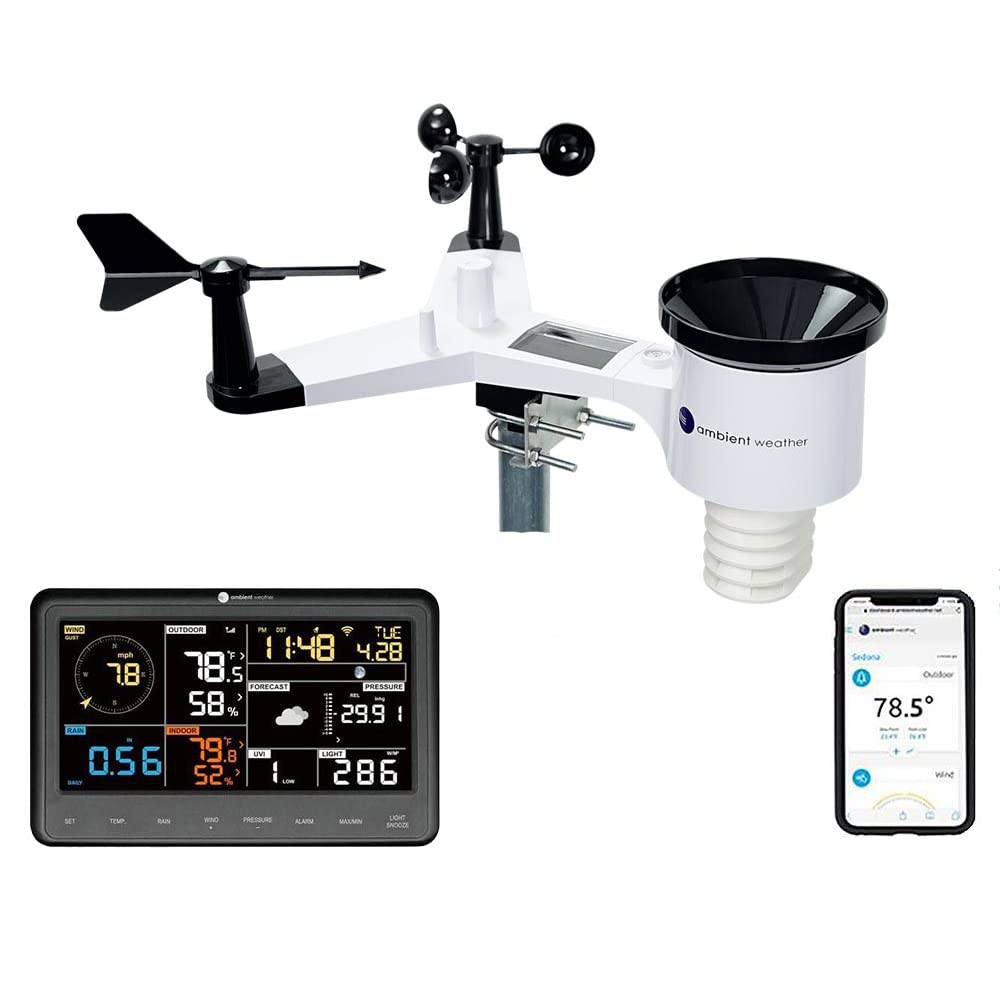Automated Weather Station
An automated weather station (AWS) is an automated version of traditional weather stations, designed to save human labor or enable measurements from remote areas. These stations typically consist of a weather-proof enclosure containing a data logger, rechargeable battery, telemetry (optional), and meteorological sensors, often powered by solar panels or wind turbines and mounted on a mast.
Key Components
- Data-Logger: The data logger is the core of an AWS, responsible for measuring, processing, storing, and transmitting data from the sensors. High-quality data loggers are designed to meet specific meteorological client requirements.
- Sensors: AWSs usually include a range of sensors to measure various atmospheric conditions:
- Thermometer: Measures temperature.
- Anemometer: Measures wind speed.
- Wind Vane: Measures wind direction.
- Hygrometer: Measures humidity.
- Barometer: Measures atmospheric pressure.
- Ceilometer: Measures cloud height (optional).
- Present Weather Sensor and/or Visibility Sensor: Measures present weather conditions (optional).
- Rain Gauge: Measures liquid-equivalent precipitation.
- Ultrasonic Snow Depth Sensor: Measures snow depth (optional).
- Pyranometer: Measures solar radiation.
Advantages
- Accurate Measurements: Automated weather stations eliminate human error and provide regular, frequent updates.
- Low Power Requirements: They can operate using solar panels, wind turbines, or mobile phone technology, making them suitable for remote locations.
- Proven Reliability: These stations require minimal maintenance and can be connected to networks for backup and redundancy.
Applications
- School Weather Stations: Installed for student safety, event planning, and STEM education.
- Airport Weather Stations: Used for airport operations, increasing efficiency and safety in air and ground operations.
Data Transmission
- Argos System: Reports data in near real-time.
- LoRa: Reports data in near real-time.
- Global Telecommunications System: Reports data in near real-time.
Challenges
- Homogenization: The change from manual to automated weather stations can lead to non-climatic changes in the climate record, which must be removed through homogenization.
Manufacturers
- Rika Sensors: Offers weather sensors and wireless automated weather stations for various industries and home use




